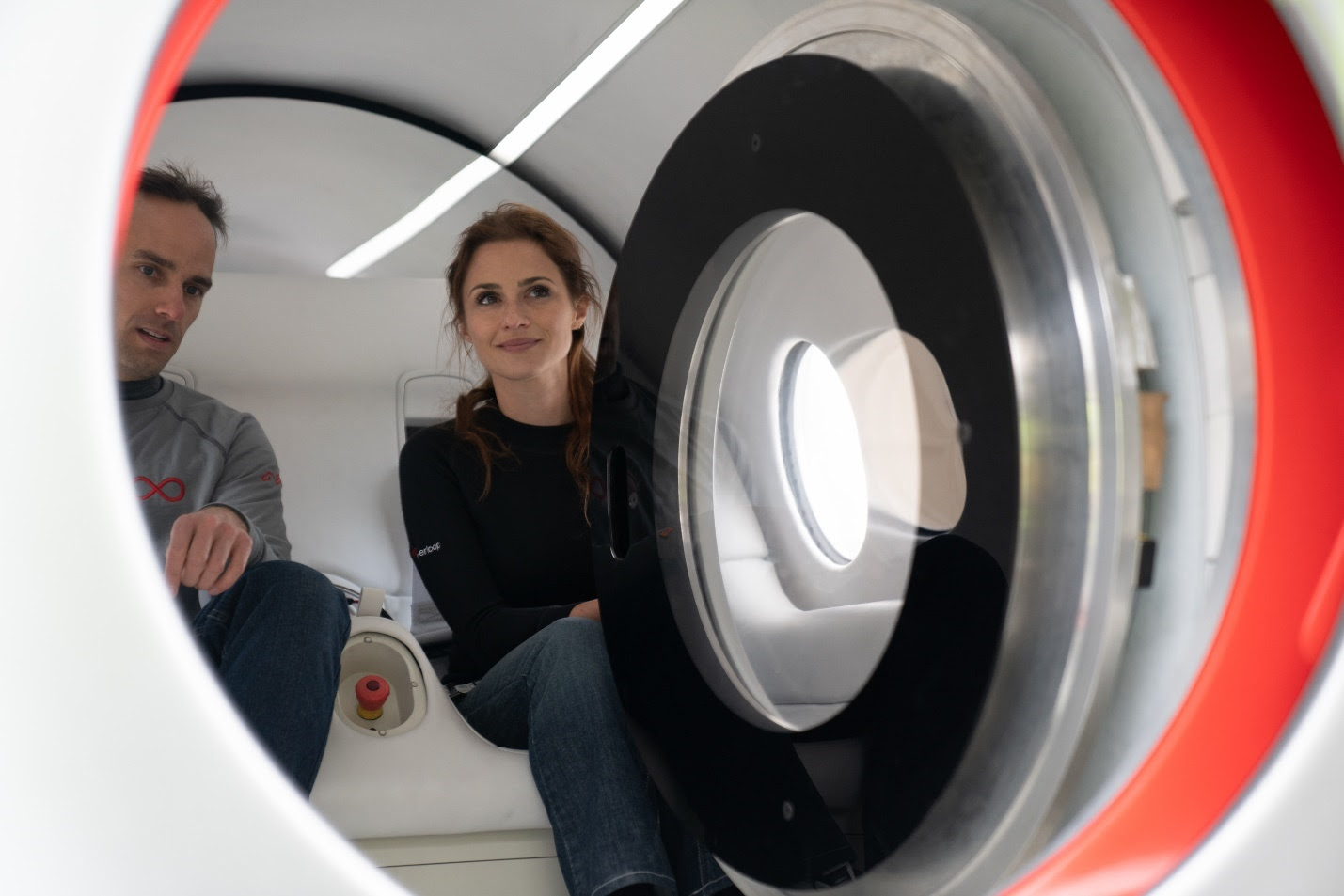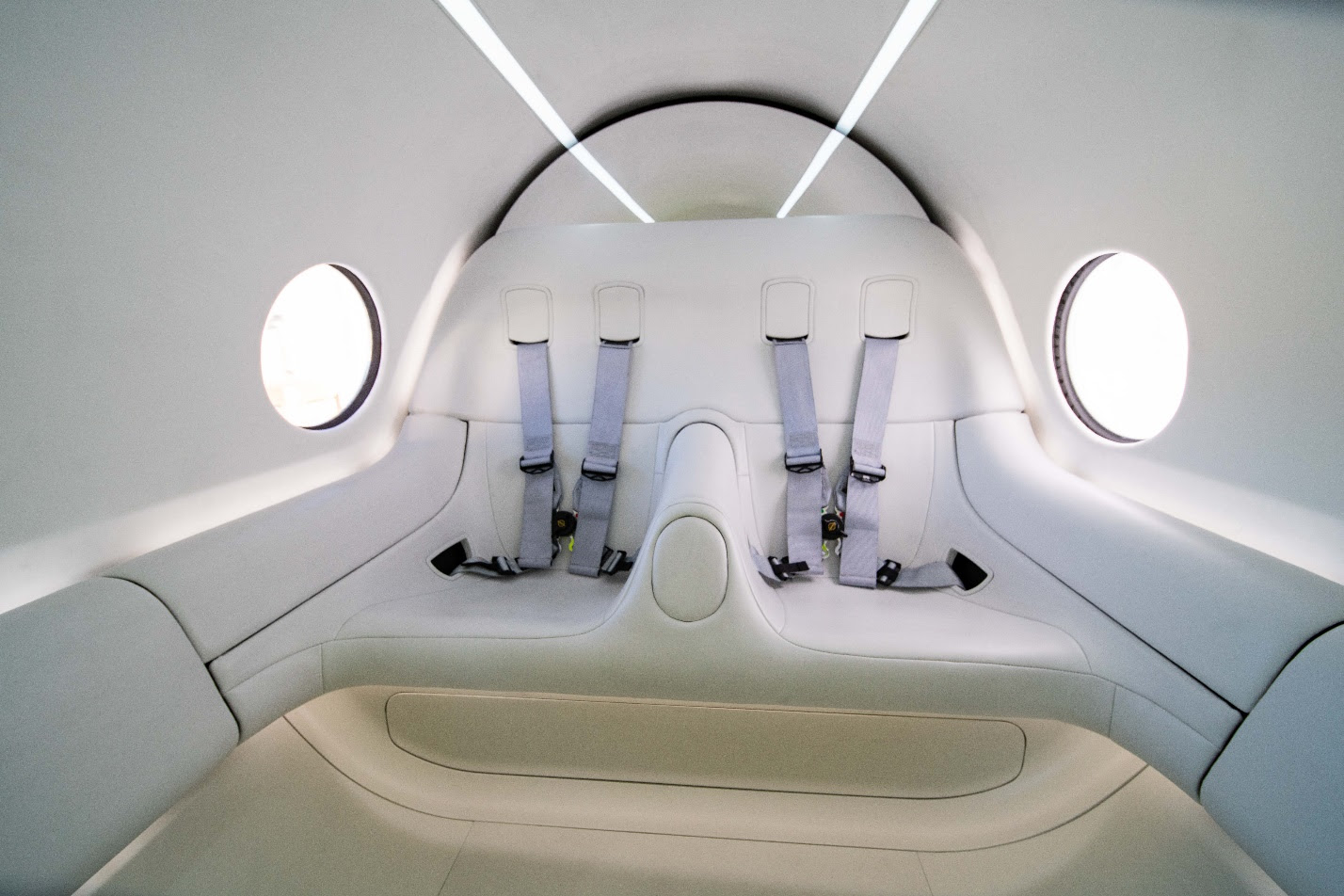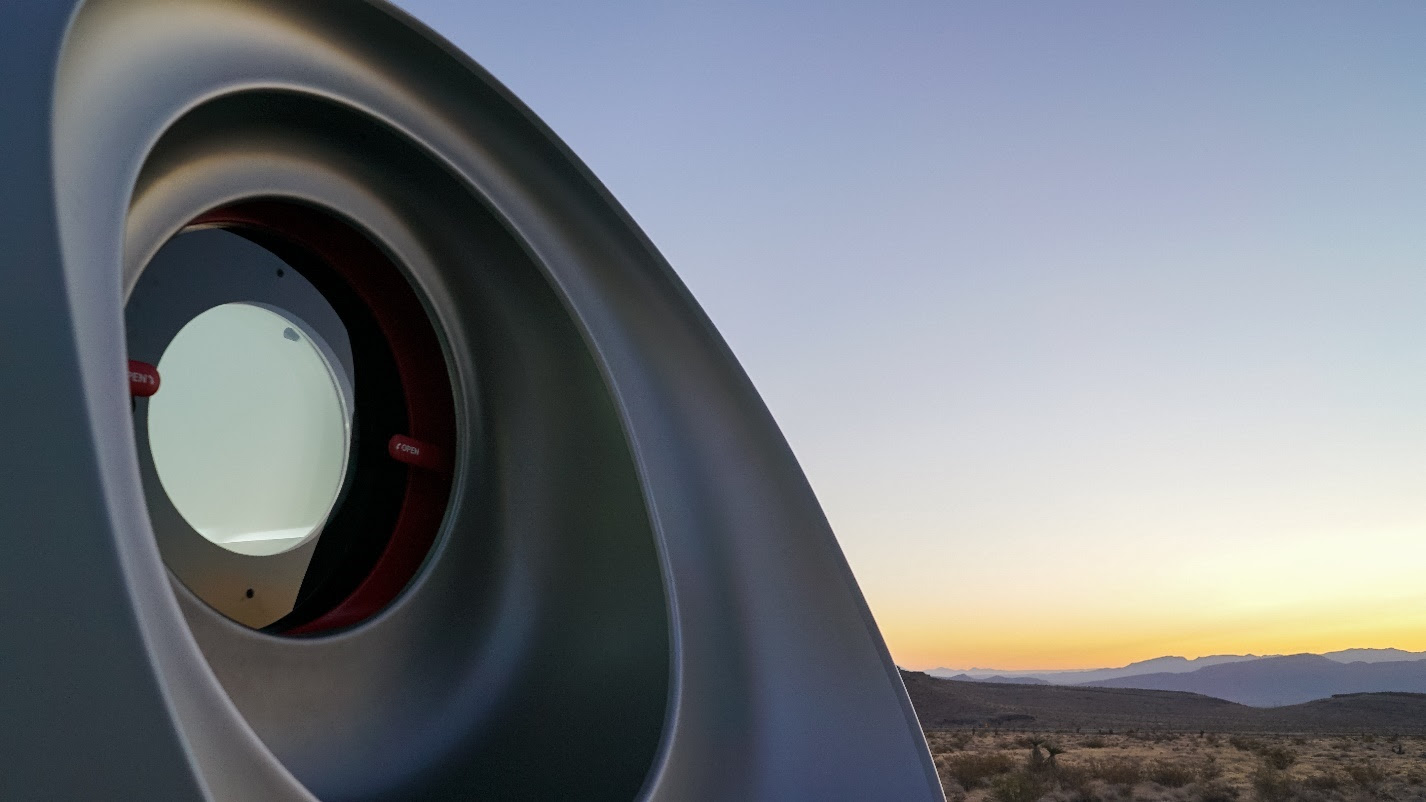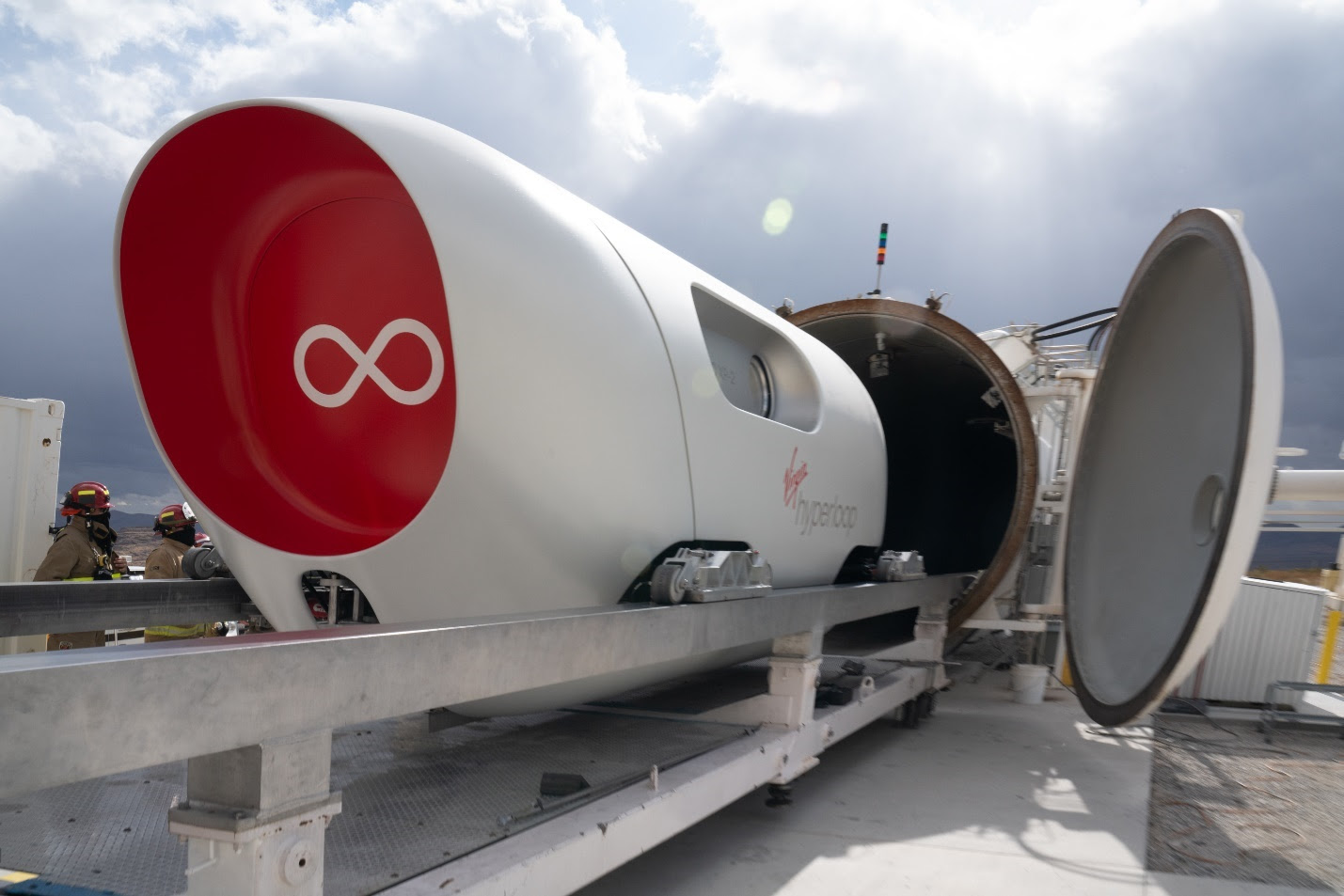After a year of close collaboration between Virgin Hyperloop, Bjarke Ingels Group (BIG), and Kilo Design, the Pegasus Pod has become the first manned and fully functional system for Hyperloop travel after a successful test in the Nevada desert.
BIG and Kilo designed for the pod’s first use case while also defining the design language and characteristics for future Virgin Hyperloop vehicles. The two-seater Pegasus Pod was built to demonstrate that passengers can safely travel in a Hyperloop vehicle. It is equipped with a control system that can detect off-nominal states and rapidly trigger appropriate emergency responses. The six-sm interior has the necessary safety equipment and controls built into the furniture. The production vehicle will be larger and seat up to 28 passengers.

The front scoops of the vessel create natural steps for easy entry and egress, and apertures on the sides of the fairing and on the front door contain a forward-facing window for outward viewing down the tunnel. These features create a link to Pegasus’ external design, where repeating soft forms and pill-shape cutouts are used to highlight depth, layers, and entryways.
Inside, the seating elements and extended arms function as an entry and egress aid, storage for safety equipment, oxygen throughput, and lighting. The seats can also be quickly assembled and disassembled for rear equipment access.

“When designing the future of transportation and the slate is sort of blank, the opportunities are endless. We’ve needed to adjust our way of thinking away from the classic modes of transporting like trains, planes and metros, and towards a new vehicle typology, closest to that of a spaceship,” said Jakob Lange, Partner, BIG, in a release.


Related Stories
Museums | Mar 25, 2024
Chrysler Museum of Art’s newly expanded Perry Glass Studio will display the art of glassmaking
In Norfolk, Va., the Chrysler Museum of Art’s Perry Glass Studio, an educational facility for glassmaking, will open a new addition in May. That will be followed by a renovation of the existing building scheduled for completion in December.
Sustainability | Mar 21, 2024
World’s first TRUE-certified building project completed in California
GENESIS Marina, an expansive laboratory and office campus in Brisbane, Calif., is the world’s first Total Resource Use and Efficiency (TRUE)-certified construction endeavor. The certification recognizes projects that achieve outstanding levels of resource efficiency through waste reduction, reuse, and recycling practices.
Office Buildings | Mar 21, 2024
Corporate carbon reduction pledges will have big impact on office market
Corporate carbon reduction commitments will have a significant impact on office leasing over the next few years. Businesses that have pledged to reduce their organization’s impact on climate change must ensure their next lease allows them to show material progress on their goals, according to a report by JLL.
Adaptive Reuse | Mar 21, 2024
Massachusetts launches program to spur office-to-residential conversions statewide
Massachusetts Gov. Maura Healey recently launched a program to help cities across the state identify underused office buildings that are best suited for residential conversions.
Legislation | Mar 21, 2024
Bill would mandate solar panels on public buildings in New York City
A recently introduced bill in the New York City Council would mandate solar panel installations on the roofs of all city-owned buildings. The legislation would require 100 MW of solar photovoltaic systems be installed on public buildings by the end of 2025.
Office Buildings | Mar 21, 2024
BOMA updates floor measurement standard for office buildings
The Building Owners and Managers Association (BOMA) International has released its latest floor measurement standard for office buildings, BOMA 2024 for Office Buildings – ANSI/BOMA Z65.1-2024.
Healthcare Facilities | Mar 18, 2024
A modular construction solution to the mental healthcare crisis
Maria Ionescu, Senior Medical Planner, Stantec, shares a tested solution for the overburdened emergency department: Modular hub-and-spoke design.
Codes and Standards | Mar 18, 2024
New urban stormwater policies treat rainwater as a resource
U.S. cities are revamping how they handle stormwater to reduce flooding and capture rainfall and recharge aquifers. New policies reflect a change in mindset from treating stormwater as a nuisance to be quickly diverted away to capturing it as a resource.
Plumbing | Mar 18, 2024
EPA to revise criteria for WaterSense faucets and faucet accessories
The U.S. Environmental Protection Agency (EPA) plans to revise its criteria for faucets and faucet accessories to earn the WaterSense label. The specification launched in 2007; since then, most faucets now sold in the U.S. meet or exceed the current WaterSense maximum flow rate of 1.5 gallons per minute (gpm).

















